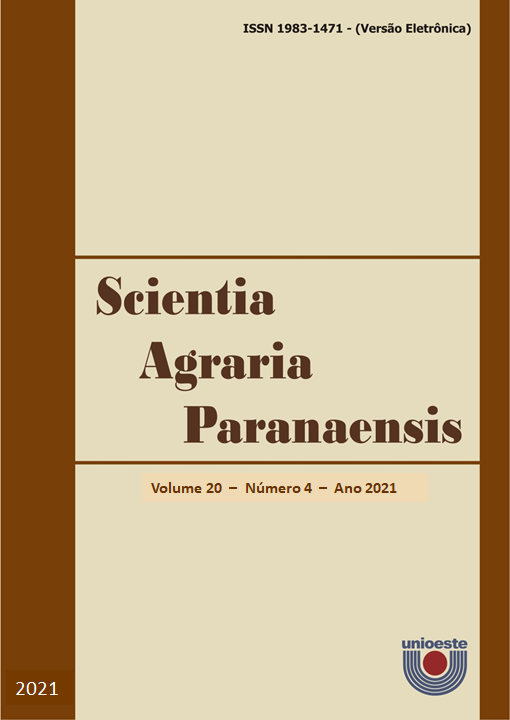Tree component analysis in a savanna-forest ecotone area of Minas Gerais State, Brazil
DOI:
https://doi.org/10.18188/sap.v20i4.29195Resumo
Ecotones are transition areas characterized by environmental complexity and high biodiversity. In this sense, carrying out a floristic survey and characterization of each phytoecological region is necessary. Thus, we analyzed the floristic composition, horizontal and vertical structure, and dispersal syndromes of the woody community in an ecotone of Cerrado Sensu Stricto and seasonal deciduous forest. Likewise, we proceeded with the floristic similarity analysis to evaluate the study area’s similarities to the vegetation of cerrado Sensu Stricto and seasonal deciduous forest. A total of 919 individuals from 19 families, 43 genera, and 49 species were sampled. The tree community has an average height of 4.12 m, a species diversity of 3.03 nats ind‑1, and a Pielou equitability index of 0.77. The predominant dispersion syndrome was anemochory. The vegetation formed floristic groups with the Cerrado Sensu Stricto. The environmental gradient that determines the occurrence of transition vegetation makes each remnant unique in terms of species and structure, demonstrating the importance of these areas for the biodiversity conservation.
Downloads
Publicado
Como Citar
Edição
Seção
Licença
Aviso de Direito Autoral Creative Commons
Política para Periódicos de Acesso Livre
Autores que publicam nesta revista concordam com os seguintes termos:
1. Autores mantém os direitos autorais e concedem à revista o direito de primeira publicação, com o trabalho simultaneamente licenciado sob a Licença Creative Commons Attribution que permite o compartilhamento do trabalho com reconhecimento da autoria e publicação inicial nesta revista.2. Autores têm autorização para assumir contratos adicionais separadamente, para distribuição não-exclusiva da versão do trabalho publicada nesta revista (ex.: publicar em repositório institucional ou como capítulo de livro), com reconhecimento de autoria e publicação inicial nesta revista.
3. Autores têm permissão e são estimulados a publicar e distribuir seu trabalho online (ex.: em repositórios institucionais ou na sua página pessoal) a qualquer ponto antes ou durante o processo editorial, já que isso pode gerar alterações produtivas, bem como aumentar o impacto e a citação do trabalho publicado (Veja O Efeito do Acesso Livre).
Licença Creative Commons
Esta obra está licenciada com uma Licença Creative Commons Atribuição-NãoComercial-CompartilhaIgual 4.0 Internacional, o que permite compartilhar, copiar, distribuir, exibir, reproduzir, a totalidade ou partes desde que não tenha objetivo comercial e sejam citados os autores e a fonte.


